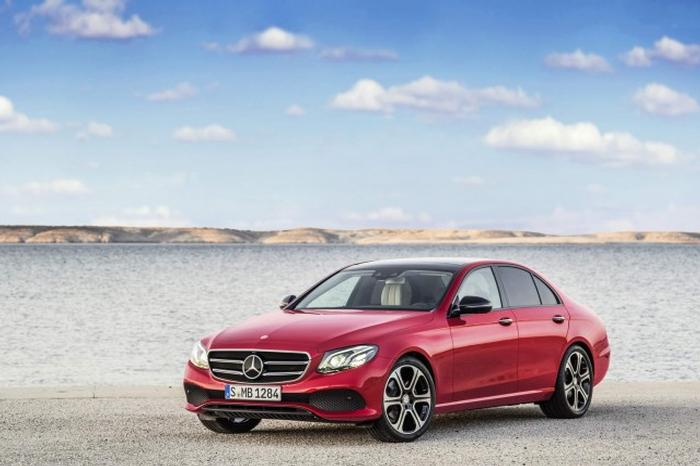2016 - 2023 Mercedes-Benz E-Class Review

Buyer's guide to the Mercedes E-Class (2016-2023)
Review
What's it like?
The Mercedes E-Class has been a staple of the company's line-up for decades, and for some it's the definition of what you would call a true Mercedes. The W213 generation was sold between 2016 and 2023 as a four-door saloon, five-door estate, two-door coupe or a cabriolet, and this generation ramped up the technology, not just on board but also under the skin.
Rivals for the E-Class include the BMW 5 Series and Audi A6, while non-German alternatives include the Jaguar XF, Lexus GS and ES and Volvo S90. The BMW, Audi, Volvo and Jaguar offered estate options, while Audi and Volvo offered high-riding crossover estates that matched the Mercedes E-Class All-Terrain.
Which model to go for?
All versions of the E-Class have luxurious interiors, with even the most basic cars feeling plush inside. Standard equipment on all models includes an automatic gearbox, while air conditioning and synthetic leather are part of the basics on Elegance cars. Touch-sensitive steering wheel controls were also added, which take some getting used to, but are easy to master once you have the hang of them.
Pick an AMG Line version or its higher spec Premium, Premium Plus or Night Edition upgrades, and there are twin 12.3 high-resolution displays. The upgrade packs add desirable items such as adaptive cruise control, full leather and matrix LED headlights with other add-ons.
Engine choice was varied, with diesel power offered in E 200 d, E 220 d, E 300 d (all four-cylinder), E 350 d and E 400 d (six-cylinder) forms. The E 400 d came with 4Matic four-wheel drive which was offered as an option on the E 220 d and E 350 d.
Petrol models included the E 200, E 250 and E 350, with fuel-saving 48-volt mild-hybrid tech available from 2019 onwards. Four-wheel drive could be had with the E 200, too. The E 400 4Matic came with a 333hp 3.5-litre twin-turbo V6, and this was replaced by the E 450 4Matic, which had a 367hp 3.0-litre twin-turbo V6, in 2018. This engine also powered the E 43 AMG, but with 401hp, while the E 43 was replaced by the E 53 AMG in 2018, which had a 435hp twin-turbo straight-six. All of these have four-wheel drive and are rare in Ireland.
At the top of the range is the E 63 AMG. This has a 4.0-litre twin-turbocharged V8 with up to 612hp, and like the rest of these models above, has four-wheel drive and can be had as a saloon or estate.
This version of E-Class also introduced plug-in hybrid power, first with an E 350 e, then E 300 e and E 300 de models. All came with 2.0-litre engines (the de being a diesel) and an electric motor, with the E 350 able to travel an official 34km on electric power, the others up to 55km, thanks to a bigger battery. There are compromises in terms of boot space, though.
The E-Class All-Terrain is a rare high-riding estate version that had extra body cladding and only came in E 350 d guise with a 3.0-litre V6 diesel and 4Matic four-wheel drive.
The E-Class Coupe and Cabriolets are more grand tourers than sporty cars, while fewer engine options were offered when compared with the saloon and estate - there were no high-performance AMG variants, or plug-in hybrid options, for example.
Does anything go wrong?
Mechanically, the W213 E-Class is pretty dependable, with the only known issues relating to potential piston damage on early E 300 models, and excessive wear of rocker arms on certain diesel engines, but both instances are rare. More important is that electrical glitches are known to occur, so check all of a car's electrical equipment works, because this could be expensive to repair. There have been recalls relating to electronics and the electrical system, one specifically for the hybrid models.



